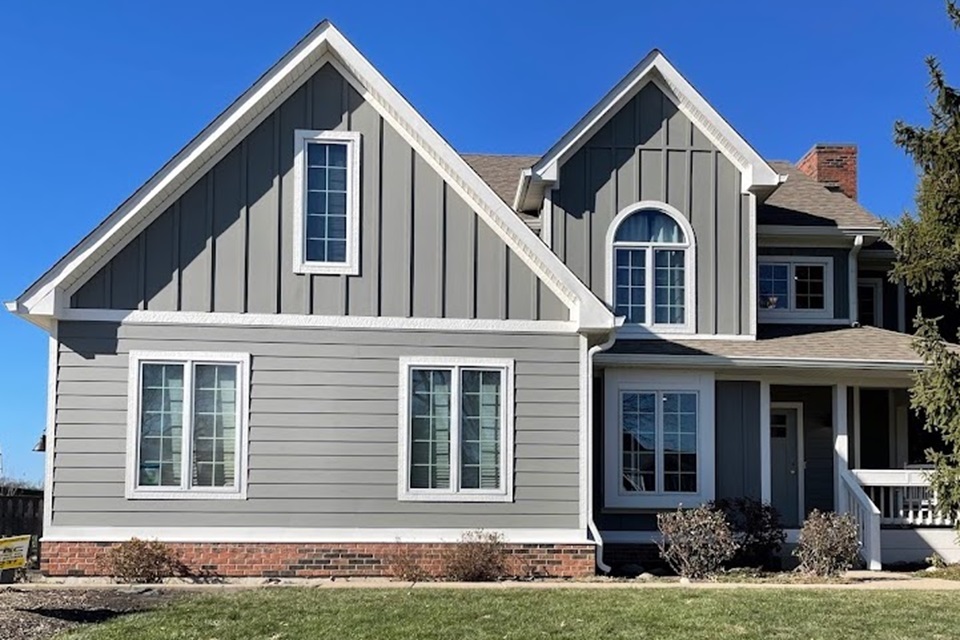Introduction To Fiber Cement Siding
Fiber cement siding has become a hallmark of modern home design, offering an innovative combination of durability, sustainability, and versatility. Composed of sand, cement, and cellulose fibers, the material is well-loved for its ability to withstand severe weather conditions, resist termites and rot, and offer fire resistance, features that the renowned James Hardie Siding brand encapsulates. As homeowners increasingly prioritize longevity and aesthetic diversity for their home exteriors, fiber cement siding emerges as a top contender, proving its worth and setting itself apart from traditional home siding options.
Historical Development Of Siding Materials
The quest for the perfect siding material has been ongoing for centuries, originating with rudimentary coverings like wooden boards and progressing to developing more sophisticated solutions such as aluminum and vinyl sidings. The desire for materials that achieve an equilibrium between cost-effectiveness and longevity has always been paramount. This historical narrative reveals an inclination towards innovation, with the advent of fiber cement siding climaxing in this progression. As the material symbolizes a marriage between traditional aesthetics and avant-garde protective qualities, it stands out as a testament to the human endeavor to continually enhance our living environments.
The Advantages Of Fiber Cement Siding For Homeowners
Introducing fiber cement siding has redefined what homeowners expect of their dwelling’s exterior. It promises an extended lifespan, often exceeding that of wood or vinyl by several decades, and offers unparalleled resilience against common siding adversaries such as moisture, warping, and fading. Moreover, the range of styles and textures available allow for individual expression in design, enabling homes to don a contemporary, classic, or even a rustic façade with equal ease. The economic implications are indisputable, as investing in fiber cement siding translates to fewer repairs, replacements, and a steady holding of property value over time. Fiber cement siding is a robust and stylish choice regarding cost, maintenance, and aesthetic harmony.
The Environmental Benefits Of Fiber Cement Siding
As global environmental concerns take center stage, the building industry has been called upon to improve its green practices. Fiber cement siding responds to this call beautifully. It consists primarily of natural materials and leverages a manufacturing process with a smaller carbon footprint than other siding materials. Its inert properties and outstanding durability also reduce turnover in building materials and save homeowners from frequent refinishing or replacements. This investment in longevity markedly lessens the environmental impact over the home’s life, making it a champion for the eco-conscious homeowner. The thermal resistance of fiber cement siding further contributes to a home’s energy efficiency, often resulting in lower heating and cooling bills and reduced greenhouse gas emissions.
Installation Process & Best Practices
Correct installation of fiber cement siding is non-negotiable to ensure its long-term performance. The process starts with meticulously inspecting the underlying wall and structure, progressing to the strategic layout and attachment of the siding panels. Specialized tools and techniques are required to securely cut and fasten the material, focusing on adequate caulking and flashing to prevent water infiltration. Professionals who are well-versed in these methodologies can avert common pitfalls such as improper gapping or alignment. Such attention to detail assures that the robust qualities of fiber cement siding are fully utilized and protected against potential vulnerabilities.
Maintenance & Care Of Fiber Cement Siding
After successful installation, fiber cement siding demands only modest upkeep—perhaps one of its most attractive features. Regular cleaning with mild soap and water can maintain its fresh look, while periodic inspections can catch any potential problems early on. Areas to monitor include any accumulation of moisture or signs of improper sealing, which should be addressed promptly. Simple practices such as these will preserve the siding’s integrity and aesthetic value, reinforcing its cost-effectiveness. However, homeowners must understand appropriate maintenance steps to ensure that any warranty remains intact and that the property’s curb appeal is consistently upheld.
Fiber Cement Siding & Home Value
Upgrading home exteriors is a strategic move that can significantly boost property valuation and enchant prospective buyers. Fiber cement siding tangibly enhances home value with its esteemed reputation for enduring beauty and low maintenance. It is a savvy investment, heightening curb appeal and offering a solid selling point. Homeowners who install fiber cement siding not only indulge in the luxury of an elegant home exterior but also secure a competitive edge in the real estate market.
The Future Of Fiber Cement Siding
Material science has always been at the forefront of industry innovation, and fiber cement siding is a beneficiary of this progressive field. Anticipated advancements are poised to improve the efficiency of its manufacturing process, potentially lowering costs and further reducing its environmental footprint. Concurrently, R&D is expected to enhance the material’s intrinsic properties, such as thermal insulation and sound-dampening qualities. Trends indicate a push towards even greater architectural flexibility, with manufacturers experimenting with new textures and finishes that might soon allow fiber cement siding to mimic a broader array of natural materials. With such potential, the future of fiber cement siding undeniably burns bright.
Choosing The Right Siding For Your Climate
Regional climate is a decisive factor in selecting appropriate siding for a home. Material adaptability to temperature variations, moisture levels, and local weather patterns is imperative for ensuring longevity and proper protective function. Fiber cement siding stands out for its universal suitability, withstanding freezing conditions and sweltering heat. For homeowners confronted with the choice of proper siding, the guidance provided by industry stalwarts can prove invaluable in weighing the pros and cons of various siding materials. Such expert advice is integral to making an informed decision based on specific environmental demands.
Real-Life Examples Of Fiber Cement Siding Applications
Captivating transformation stories dot the landscape of American homes, where fiber cement siding has altered exteriors for the better. These homeowners rejoice in a newfound peace of mind, thanks to the siding’s ability to resist elements that would degrade other materials. Fiber cement siding has repeatedly proven worth, from colonial residences in damp coastal localities to modern abodes in wildfire-prone areas. Such personal narratives of durability, cost-effectiveness, and aesthetic enhancement bring life to the data, illustrating the day-to-day benefits that can be expected from this remarkable material.
Conclusion: Making An Informed Decision For Your Home
Fiber cement siding is a testament to the balance between innovative engineering and ecological responsibility in modern home design. It’s a choice that reflects both the homeowner’s aesthetic taste and forward-thinking stewardship. With an informed understanding of the material’s benefits, maintenance requirements, and cost implications, those seeking to upgrade or build their home exteriors have a solution that meets the demands of both today and the future. This contentment aligns with the values of durability, beauty, and sustainability, which are increasingly defining quality living spaces. Thus, when considering fiber cement siding, homeowners engage in not merely an economic transaction but a statement of lifestyle and values that transcends the material itself.








No Comments